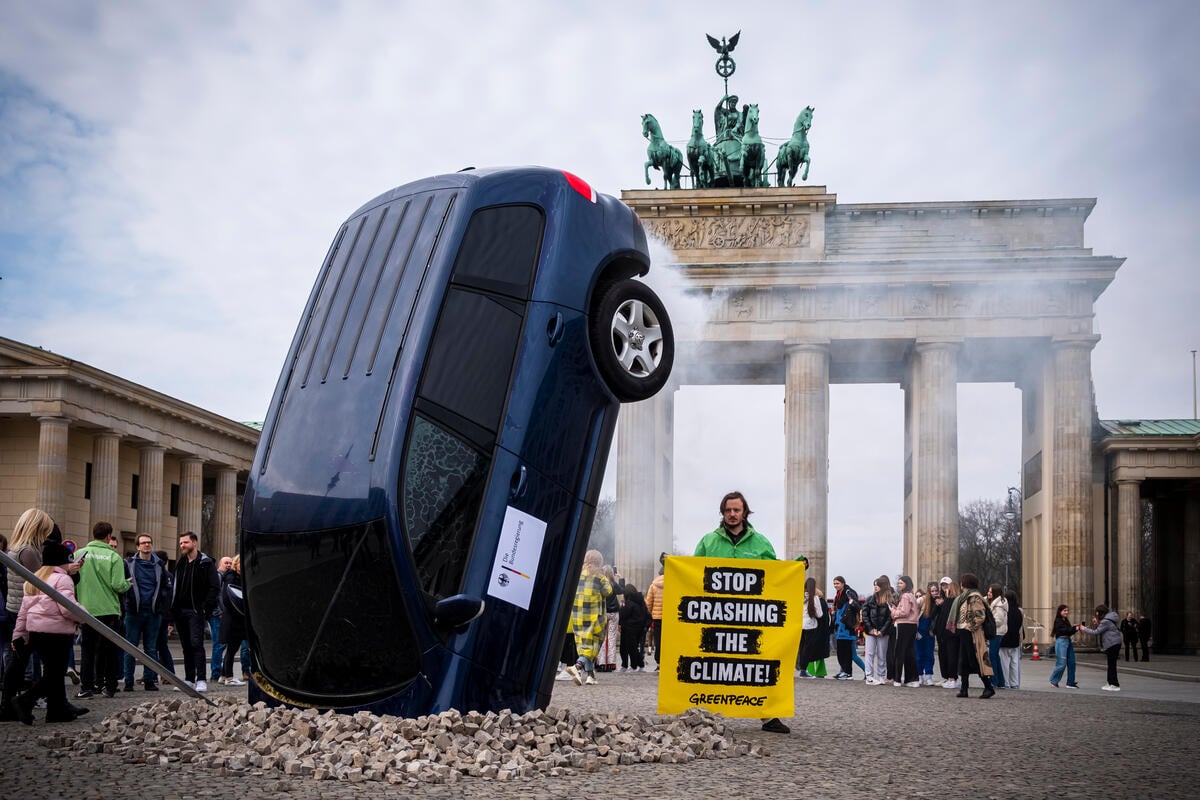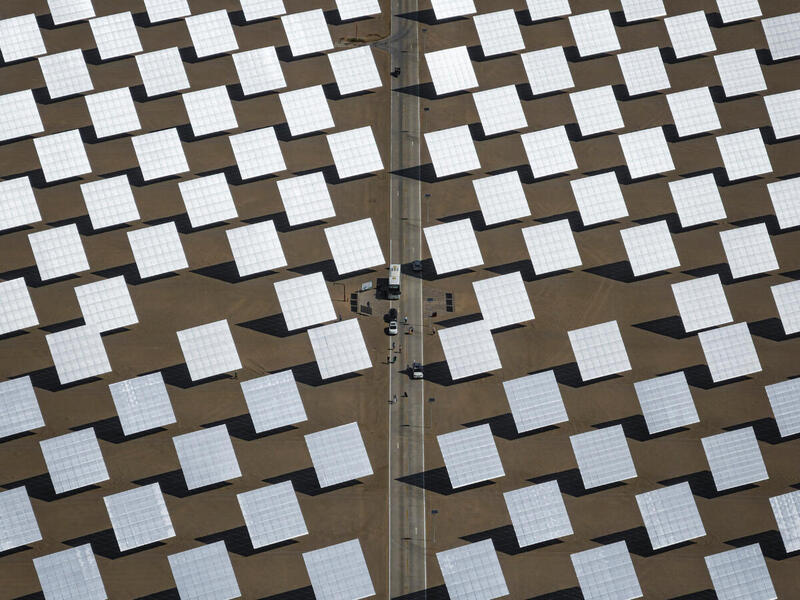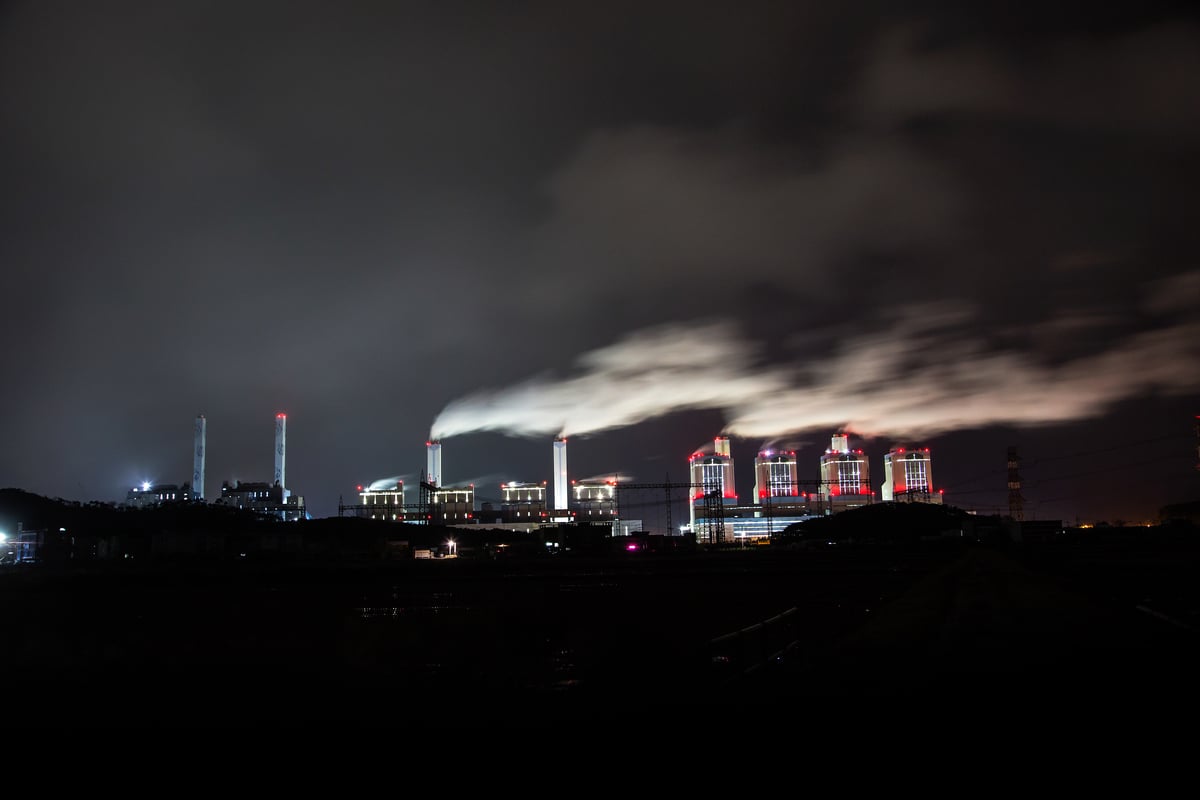Let’s travel back a decade ago to April 2011. Prentice Koo (aka Muk) was Greenpeace Hong Kong’s senior campaigner back then, overseeing the Climate and Energy project. It was also in that year which he visited the Chernobyl Exclusion Zone in Ukraine. For our latest in the “Let’s Talk about Climate Change” series Muk, now the Program Manager in our Taipei office, is taking us down memory lane. We will discuss his trip to Ukraine for the Chernobyl anniversary and his involvement in the Fukushima nuclear disaster a decade ago while digging deep into the Greenpeace Hong Kong office’s efforts in related climate and energy issues.
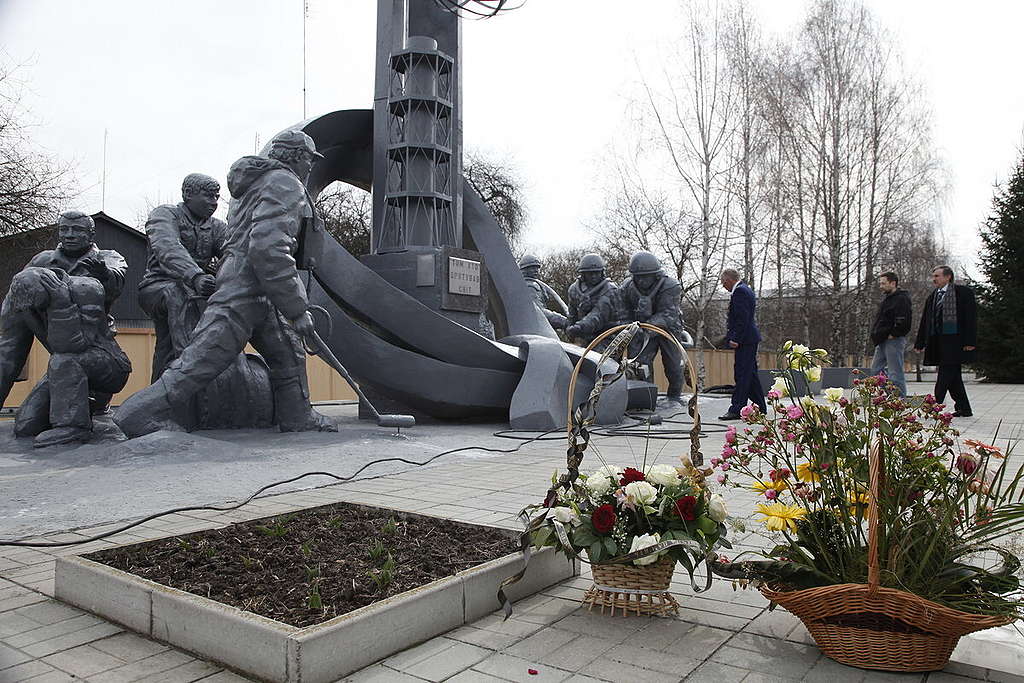
2011: the first encounter of a nuclear disaster
The government hosted a series of public consultations on climate and emission policies in 2010. It aimed to address climate change and increase emission targets. One of the policies discussed was introducing nuclear energy. Greenpeace prepared a countercase based on the Chernobyl anniversary of the years and hoped to bring the Chernobyl experience home while raising awareness of nuclear disasters and the risks of nuclear energy. The goal was to push the government to adopt renewable energy over nuclear energy.
Nuclear wasn’t a priority topic of Greenpeace until then. Muk and Ray Lui Yu-ting, the research and investigation manager, were sent over to the Netherlands to study radiation protection. Their experience would let them research and prepare materials on the campaign against nuclear energy that are compatible with Hong Kong.
Then, a giant earthquake occurred on 11 March 2011 and triggered the meltdown at the Fukushima no.1 nuclear reactor. Around the globe, Greenpeace staff with knowledge on nuclear energy worked around the clock together on monitoring the situation in Japan, and at the same time, worked on the Chernobyl anniversary project. It was an intense time for those involved.
Greenpeace facilitated media worldwide to visit the Chernobyl area at the anniversary on 26 April 2011. As Hong Kong reporters were visiting, Muk, who hasn’t been to Ukraine, felt the need for a pre-trip. Before the anniversary, he flew via the Netherlands, then to Chernobyl. He hoped first to understand the situation on the ground to get prepared for the press tour.
In the end, two major media in Hong Kong ran a 25th-anniversary in-depth coverage, and news channels ran live coverage on key timeslots. What seemed to be distant got considerable awareness, with nuclear energy and disasters becoming a topic close to home.
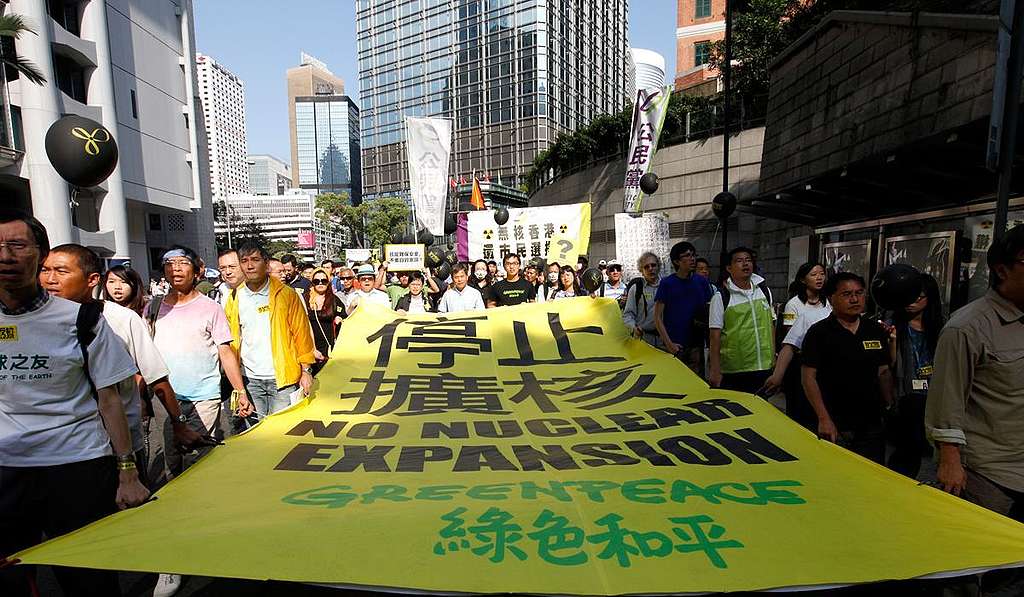
Chernobyl Disaster – Bear Witness
To Muk, the trip to Chernobyl was about witnessing first-hand, and bearing witness is also one of Greenpeace’s core values. Interviewing locals can bring out the real and human side of the nuclear disaster, such as the Ukrainian government’s difficulty in meeting the higher pension demands from those affected and the harsh lives in the region. Ironically to the liquidators who were called to clear the nuclear debris as soldiers at the incident, their trauma made work opportunities more available amid government austerity, with museum security as a favourable source of work.
“I deliberately spoke with the doctors at the hospitals to get a medical perspective on things”. Muk’s interview with medical personnel had found some interesting facts, such as the local standards and medical procedures. When patients were found with high radiation dosage, doctors would advise them to leave town and call it a “holiday”. Children also had a similar practice during school breaks.
There are few abnormal infants in the area, but the doctors revealed a bleaker truth: many couples chose abortion, and research of radioactive impact on people’s health is impossible due to the lack of resources
“You see a shift in this trip, from experiencing to researching, and you see the limitations of research. Then, you need to discuss these issues and feel why Greenpeace is so focused on bearing witness. You can see the world through the internet or live footage, but seeing it on the ground is always different”.
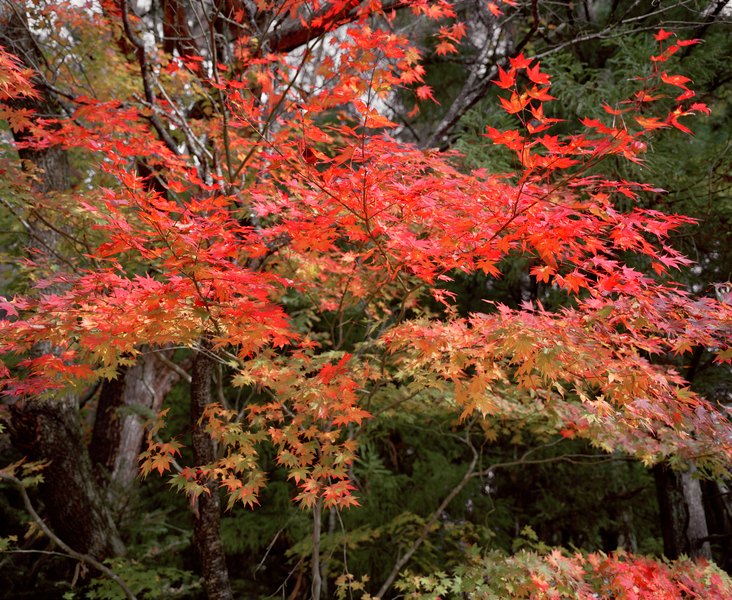
Debunking nuclear energy
In May 2011, Muk set foot on Fukushima for the first time and collected seawater samples at the Tokyo bay. He had since taken roughly six trips to Fukushima after his Chernobyl trip, and that concerns his family. But his training allows him to spot and present risks, and he values this experience. “This helps to bring the message back home, that the issue of climate isn’t all about money and development, extreme weather or emission. Nuclear energy is about risks and how to assess it, and also the damage to human decades down the track”, he said.
Muk “credits” the nuclear energy sector in demystifying nuclear energy. While they often claim nuclear energy creates no waste, they only focus on the cleanest part of the process. They omitted the devastating pollution when extracting uranium, let alone the well-known nuclear waste issues. Radioactive elements in nuclear wastes can last up to 300 years, compared to the oft-discussed carbon dioxide that lasts for 200 years in our atmosphere.
The true meaning behind climate and energy
Muk has been promoting the climate and energy debates and advocating for environmental protection for years now. What drives him in doing all these?
Now the project manager in our Taipei office, Muk believes that finding the building on the message’s credibility is vital to bringing change. This can be done by doing new research or using new angles. “What’s fun about campaigns is convincing people that there is a problem to be solved. Like lacking hospital beds for the elderly, instead of providing the beds first-hand, my role would be to bring a consensus in the community and raise awareness that this is a problem we need to solve.”
“Years ago we lobbied China Electric into saving energy. The normal reaction would be ‘that’s nuts; energy will never save energy’. We were nuts, we were trying to change the rules of the game”, said Muk. To push for environmental changes we always need a new narrative, a new imagination. He said if Greenpeace tries to make the community use less energy, replacing everyone’s air conditioner could only bring limited results. But if Greenpeace could push electricity companies to save more energy, there would be HKD150 million extra from their pockets, which can help more families save energy.
Muk understands that nuclear energy is not a topic that requires Hongkongers’ immediate attention as he ends the interview with this topic. He particularly does not want it to be so. But he pointed out that the Daya Bay power plant was a product of the 1990s and will be decommissioned in 2035. It may seem far, but the plant supplies 30% of Hong Kong electricity. In finding a replacement that can cover such a significant proportion, ensuring a safe and smooth method is essential and something Hongkongers need to consider. An alternative would be to prolong the Daya Bay power plant’s lifespan. But Muk cautioned that Fukushima is a product of such a decision, which the plant’s ageing helped cause the disaster. There is no doubt that Hong Kong will soon face a new nuclear debate.
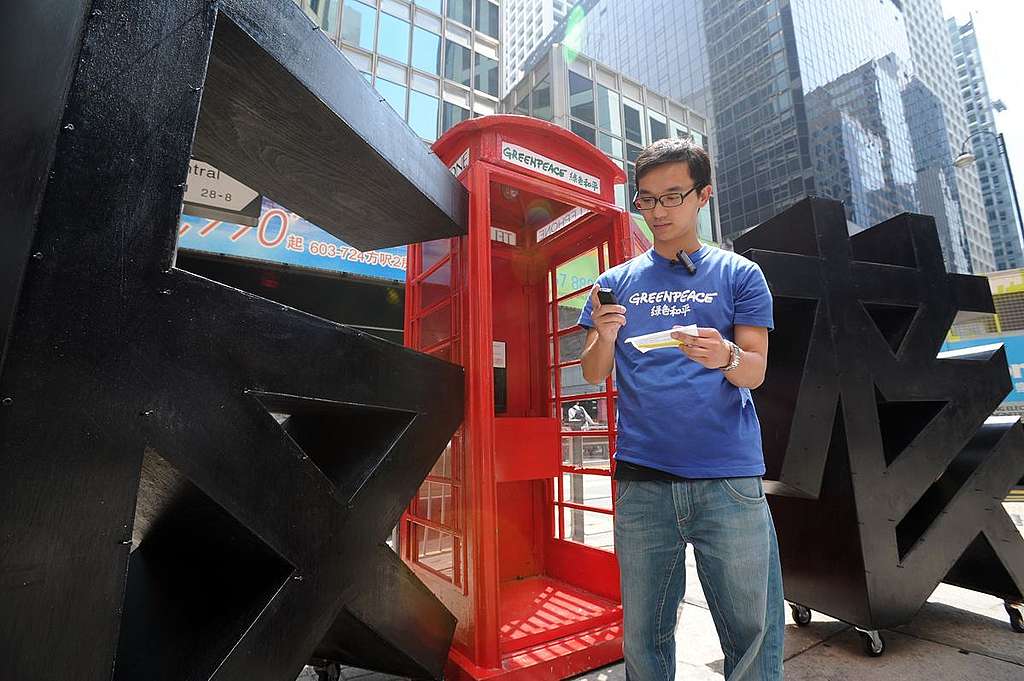
About “Let’s Talk about Climate Change” series
Climate change is not only here, but it has also evolved to “Climate Emergency”. As global citizens, we should not ignore the crisis we are in. Yet sometimes if not all, we might feel the issue is too big for us or too far away. We are inviting people in our local community, from all walks of life, to share with us how they connect to and make the effort to deal with climate change. Read More

